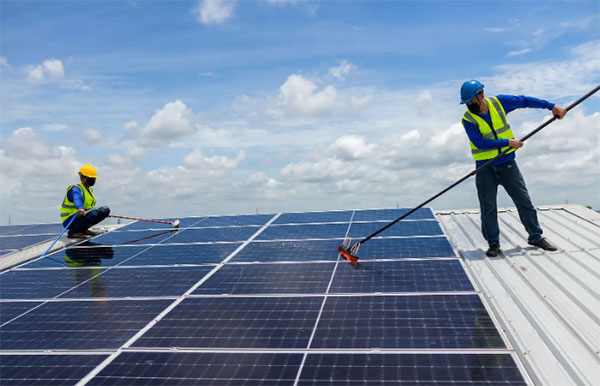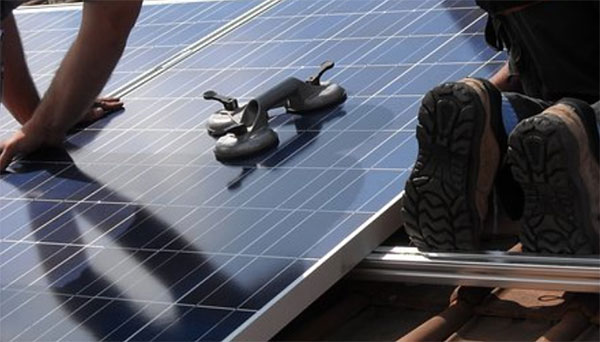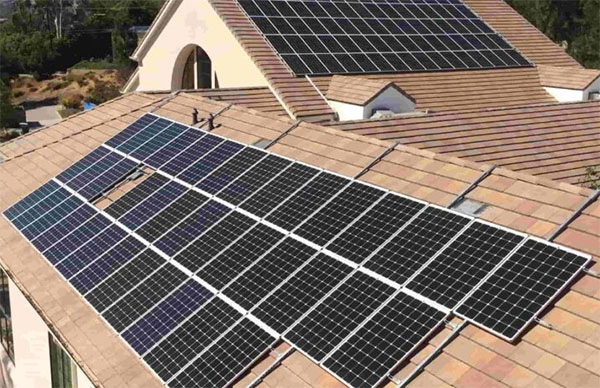
Factors Affecting Solar Panel Lifespan
The lifespan of solar panels is a critical aspect to consider for anyone investing in solar energy. Several factors can significantly influence how long your solar panels will effectively function.
Environmental Impact
Solar panels are exposed to various environmental elements that can affect their durability and efficiency.
- Exposure to Sunlight: Continuous exposure to sunlight can cause solar panels to degrade over time. The rate of degradation depends on the intensity and duration of sunlight they receive.
- Temperature Fluctuations: Extreme temperatures, both hot and cold, can cause materials in the panels to expand and contract, leading to physical stress.
- Weather Conditions: Harsh weather conditions like hail, heavy snow, and strong winds can physically damage the panels, affecting their lifespan.
Quality of Materials
The quality of the materials used in manufacturing solar panels is pivotal to their longevity.
- Solar Cells: High-quality solar cells, like those made from monocrystalline silicon, typically last longer and have a higher efficiency rate.
- Glass Coating: A durable, high-transparency glass coating protects the solar cells from environmental damage while allowing optimal sunlight penetration.
- Frame and Backing Materials: The structural integrity of the frame and backing materials ensures the panels remain intact and functional under various conditions.
Installation and Maintenance
Proper installation and regular maintenance are key to maximizing the lifespan of solar panels.
- Professional Installation: Ensuring that solar panels are installed by professionals can prevent issues related to poor installation, such as incorrect angling or insecure mounting.
- Regular Cleaning: Periodic cleaning of the panel surface is essential to maintain optimal efficiency. Dust, dirt, and other residues can block sunlight and reduce performance.
- Inspections and Repairs: Regular inspections can identify and rectify potential problems like loose wiring or damaged cells, prolonging the panel's lifespan.
By understanding and addressing these factors, you can ensure your solar panels provide sustainable and efficient energy for many years. It's crucial to consider the specific environmental conditions of your location, opt for high-quality materials, and follow best practices in installation and maintenance.
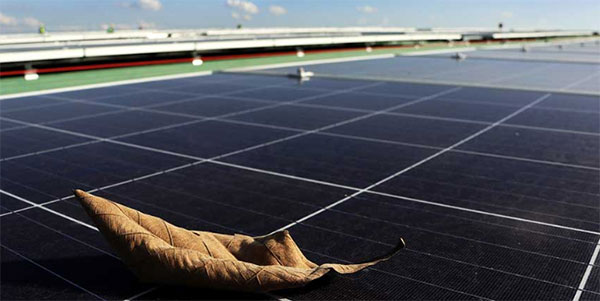
Maintenance of Solar Panels
Maintaining solar panels is crucial for ensuring their longevity and optimal performance. Regular maintenance not only helps in maximizing the
efficiency of the panels but also in preventing potential long-term damage.
Routine Cleaning and Inspection
- Cleaning Process: Regular cleaning of solar panels involves removing dust, dirt, and other debris that can accumulate on the surface. This can be done using a soft brush or cloth and mild detergent if necessary. Avoid using abrasive materials that can scratch the glass.
- Frequency of Cleaning: The frequency depends on the local environment. In dusty areas or places with frequent bird droppings, more frequent cleaning is necessary.
- Inspection: Inspect the panels for any signs of damage, such as cracks or discoloration. Also, check the wiring and mounting system to ensure everything is secure and intact.
Addressing Common Wear and Tear
- Panel Degradation: Solar panels naturally degrade over time, losing about 0.5% to 1% of their efficiency annually.
- Repairing Minor Damages: If you find minor damages like small cracks or loose wiring, it's important to address these issues promptly. Depending on the severity, you might need professional assistance.
- Replacing Worn Out Parts: Some components, like inverters and connectors, may wear out faster than the panels themselves. Regularly check these parts for signs of wear and replace them as needed.
Proper maintenance of solar panels is a key factor in ensuring they continue to generate power effectively throughout their lifespan. By conducting routine cleaning and inspections and promptly addressing any wear and tear, you can significantly enhance the performance and longevity of your solar panel system.
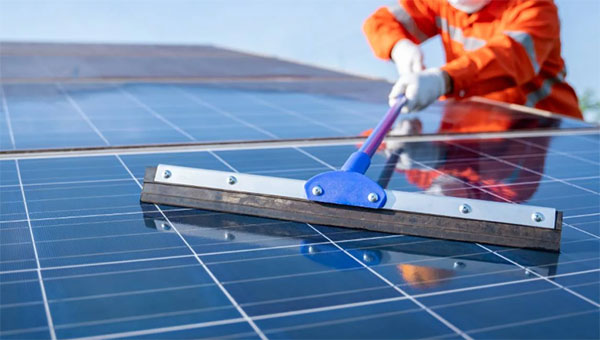
Signs of Solar Panel Degradation
Understanding the signs of solar panel degradation is essential for maintaining their performance and efficiency. Degradation refers to the gradual loss of power output and efficiency over time, a natural phenomenon in all solar panels.
Decreased Energy Efficiency
One of the most apparent signs of solar panel degradation is a decline in energy efficiency. This refers to the panel's ability to convert sunlight into electricity. A solar panel's efficiency typically decreases at a rate of about 0.5% to 1% per year. This decrease can be more pronounced depending on the quality of the panels and the environmental conditions they are exposed to. To assess this, you can monitor the energy output data over time. If the panels are producing significantly less energy than their
rated capacity, this is a clear indication that they are degrading.
Visible Damage and Wear
Physical inspections can reveal visible signs of degradation. Look for any cracks, discoloration, or delamination of the panel's surface. These issues can arise due to weather exposure, physical impacts, or manufacturing defects. Cracks, even small ones, can allow moisture to penetrate the panel, further exacerbating the degradation process. Discoloration, often seen as yellowing or browning, can indicate that the panel's protective layers are breaking down, which reduces its ability to capture sunlight efficiently.
Electrical Issues
Electrical issues in solar panels can also indicate degradation. Problems such as loose connections, corroded wires, or malfunctioning inverters can reduce the overall system performance. These issues often manifest as inconsistent power output or sudden drops in power generation. Regular electrical maintenance is essential to identify and address these issues promptly. It involves checking the wiring, connections, and the inverter's health to ensure everything is functioning correctly.
Monitoring and addressing these signs of degradation are crucial in maintaining the optimal performance of solar panels. Regular cleaning, inspections, and professional maintenance can help mitigate these effects and prolong the lifespan of the panels.
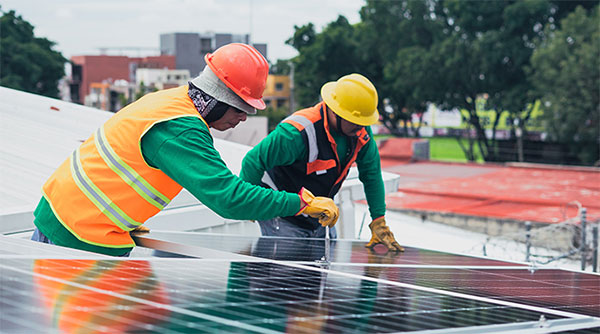
Upgrading Solar Panels
Upgrading solar panels can significantly enhance the efficiency and output of your solar energy system. This process involves replacing older panels with newer, more advanced models or adding additional panels to increase capacity.
When to Consider Upgrading
Consider upgrading your solar panels if they are nearing the end of their lifespan, typically around 25 to 30 years. Other indicators include a noticeable decrease in energy production or if the panels have sustained damage that impairs their function. Upgrading is also worth considering if there have been significant advancements in technology since your original installation. Newer panels offer higher efficiency, meaning they can generate more power in the same amount of space, making them a valuable upgrade for those with limited roof space.
Advances in Solar Panel Technology
Recent advances in solar panel technology have led to significant improvements in efficiency and durability. Modern panels, such as those made from monocrystalline silicon, offer efficiencies upwards of 20%, a substantial increase compared to older models. Innovations like bifacial solar panels, which capture sunlight from both sides, and thin-film technology provide options for various applications and environments. These advancements not only increase the power output but also extend the lifespan and reliability of the panels.
Cost-Benefit Analysis
Performing a cost-benefit analysis is crucial when considering upgrading solar panels. This analysis should take into account the initial cost of the new panels, including installation and any necessary upgrades to the supporting infrastructure. Balance these costs against the expected increase in energy production, reduced electricity bills, and potential incentives or rebates available for solar upgrades. Additionally, consider the environmental benefits of higher efficiency panels, which can offset more carbon emissions over their lifespan. Evaluating these factors will help determine the financial and environmental viability of upgrading your solar panels.
Upgrading solar panels is a decision that requires careful consideration of various factors, including the age and condition of your current panels, advancements in technology, and a thorough cost-benefit analysis. Making an informed decision can lead to significant improvements in the efficiency and output of your solar energy system.
Replacement Process
The process of replacing solar panels involves several key steps, from planning and removing old panels to installing and commissioning new ones. This process ensures a smooth transition to more efficient and effective solar energy production.
Steps for Replacing Solar Panels
Initiating the replacement process starts with a thorough evaluation of the existing solar panel system. This evaluation includes assessing the age, performance, and physical condition of the current panels. After the assessment, select new solar panels that meet your energy needs and budget. This selection should consider the latest advancements in solar technology, such as higher
efficiency rates and more durable materials.
Disposal of Old Panels
Disposing of old solar panels responsibly is an important step in the replacement process. Many components of solar panels, including glass, metal, and certain types of silicon, are recyclable. Contact local waste management services or specialized recycling companies that handle solar panel components. Ensure that the disposal adheres to environmental regulations and guidelines to minimize any negative environmental impact.
Installation of New Panels
Installing new solar panels typically involves removing the old panels, updating or replacing the mounting system if necessary, and installing the new panels. Ensure that the installation aligns with local building codes and electrical standards. After installing the panels, connect them to the electrical system and perform necessary tests to ensure they are functioning correctly. This final step often includes commissioning the system, which may involve calibrating inverters and ensuring the system integrates seamlessly with any existing power management systems.
The replacement of solar panels, when done properly, can significantly upgrade the efficiency and effectiveness of a solar energy system. It's a process that involves careful planning, responsible disposal of old panels, and meticulous installation of new ones to ensure optimal performance and compliance with relevant standards.
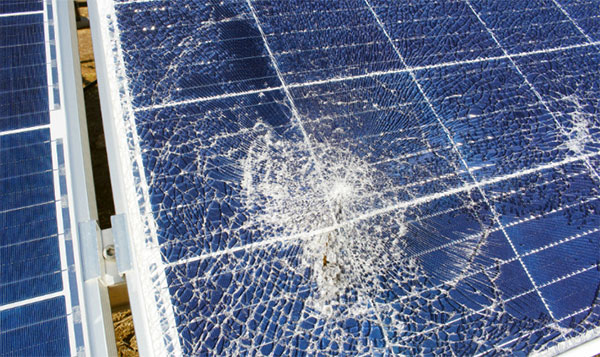
Economic and Environmental Considerations
When considering the upgrade of solar panels, it's essential to evaluate both the economic and environmental aspects. These considerations ensure that the upgrade is not only financially viable but also contributes positively to environmental sustainability.
Cost of Replacement
The cost of replacing solar panels primarily includes the expense of new panels and the installation process. When considering new panels, products from companies like
Tongwei, known for their quality and efficiency, can be a wise choice. They offer a range of solar products that are cost-effective in the long run due to their durability and high energy output. The initial investment in higher-quality panels like those from Tongwei might be higher, but they offer better long-term value. Also, consider potential savings from government incentives, rebates, and the reduction in electricity bills when calculating the overall cost.
Impact on Energy Savings
Upgrading to more efficient solar panels, such as those offered by Tongwei, significantly impacts energy savings. These panels typically have a higher
efficiency rate, meaning they convert more sunlight into electricity. This increased efficiency leads to greater energy output, reducing dependence on grid power and lowering electricity costs. For example, upgrading from panels with an efficiency of 15% to those with 20% can yield considerable savings over the panels' lifespan, especially in regions with high solar irradiance.
Environmental Benefits of Upgrading
Upgrading to more efficient solar panels like those from Tongwei also offers substantial environmental benefits. Higher efficiency panels generate more electricity per unit area, reducing the carbon footprint associated with energy production. This is a significant step towards reducing greenhouse gas emissions and combating climate change. Moreover, companies like Tongwei often invest in environmentally friendly manufacturing processes, further minimizing the ecological impact of solar panel production.
In conclusion, when upgrading solar panels, it's important to consider both the economic and environmental benefits. Opting for high-quality, efficient panels from reputable manufacturers like Tongwei can offer long-term financial savings and contribute positively to environmental sustainability.






